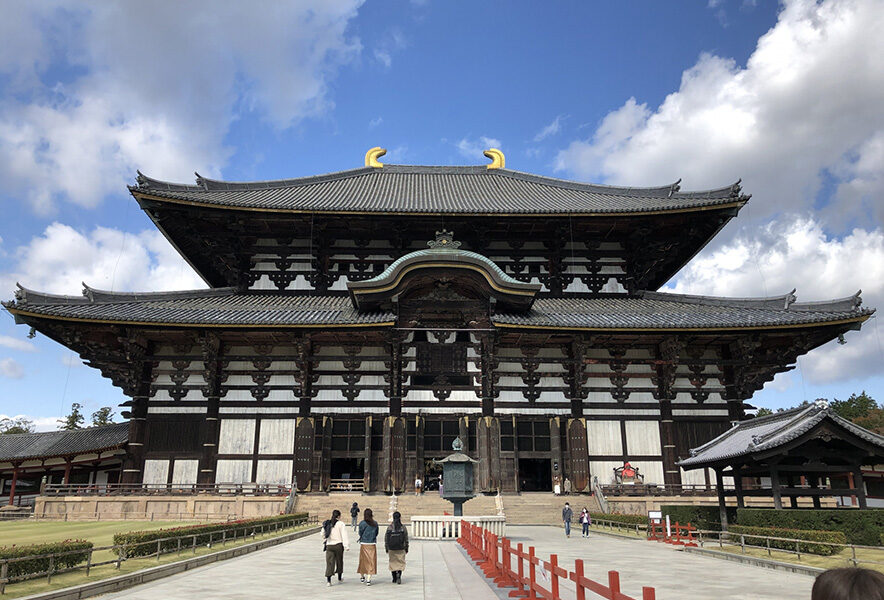”Todaiji Temple” is the head temple of all the Kokubunji temples in Japan.
Todaiji Temple” is the head temple of the Kegon sect of Buddhism, located in Zoshicho, Nara City, Nara Prefecture, and is also known as “Konkomyo Shitenno Gokokuji Temple.
Todaiji Temple” was originally called Kinshuji Temple (a temple built by Emperor Shomu for his son who died prematurely), which became a Kokubunji Temple in Yamato Province in 741 under the decree of the establishment of Kokubunji Temple, and its name was changed to “Konkomyoji Temple”. The decree of the establishment of Kokubunji Temple refers to the order by Emperor Shomu to build Kokubunji Temples and Kokubun Nunji Temples throughout the country.
And when the casting of the Great Buddha began in 747, the name of the temple was changed to “Todaiji Temple”
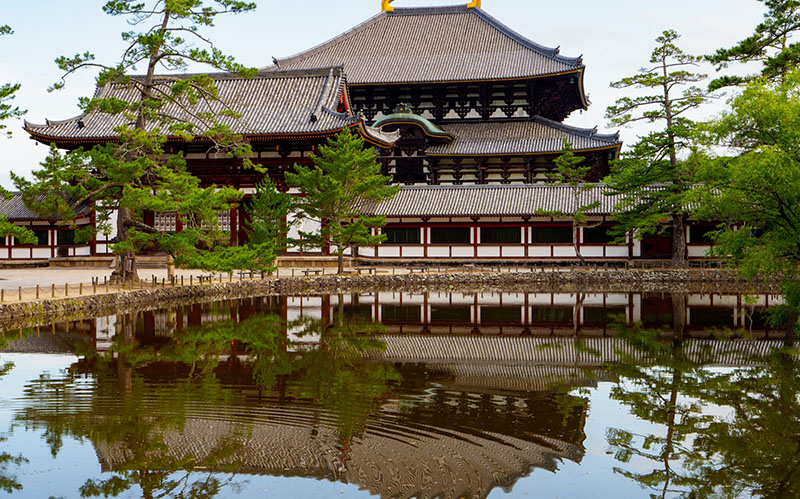
In addition, “Todaiji Temple” was positioned as the So Kokubunji Temple, the head temple of all Kokubunji Temples in Japan.
In 1998, the temple was registered as a World Heritage site as one of the “Cultural Properties of Ancient Kyoto
Architecture of Todaiji Temple
Todaiji Temple” has many architectural structures, including national treasures and important cultural properties, and we will introduce some of the structures that you must see.
Main southern gate of a temple
First is the National Treasure “Nandaimon”.
Nandaimon, the main gate of Todaiji Temple, was rebuilt in the Kamakura period (1185-1333) and was constructed in a new style called the Great Buddha style (Daibutsusyo, also known as the Kamakura New Style or Sung Style), which came from the Sung Dynasty in China.
With a height of approximately 25 meters, it is the largest gate in Japan.On both sides of the gate are statues of Niou, designated as national treasures.
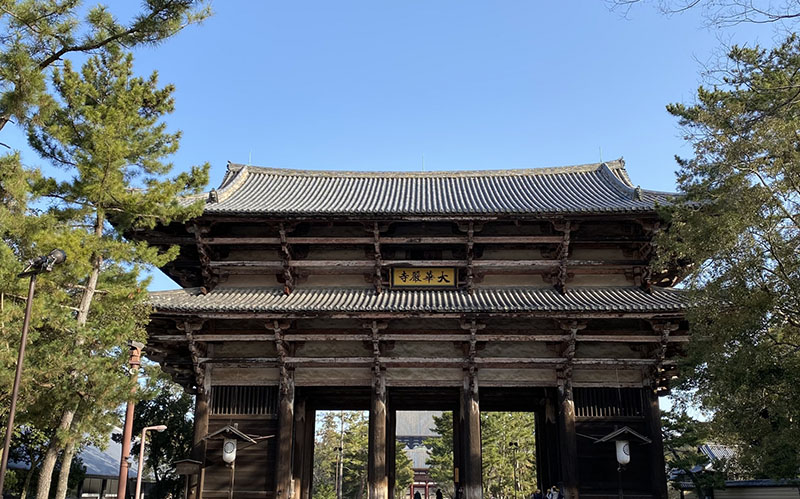
Main temple structure
Next is the Kondo, a national treasure.
Kondo” is also called “Daibutsuden” and is the first main spot in “Todaiji” where the Great Buddha is enshrined.
The current Kondo was rebuilt in the Edo period (burned down in conflicts in 1180 and 1567) and is one of the largest wooden structures in the world at 57 m high (86 m when it was built).
The main statue, Vairocana Buddha (also known as the Great Buddha of Nara), a national treasure, is enshrined inside.
This great Buddha has been burned down twice since the Middle Ages, with the exception of the lower body and pedestal. The head was cast in 1690.
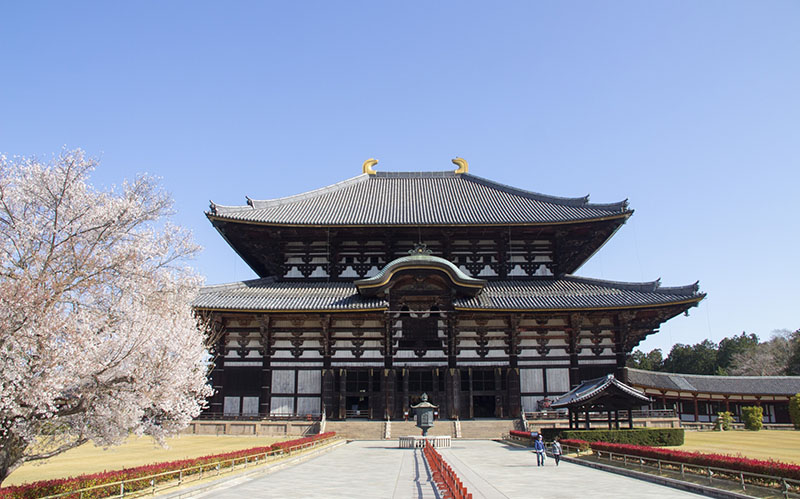
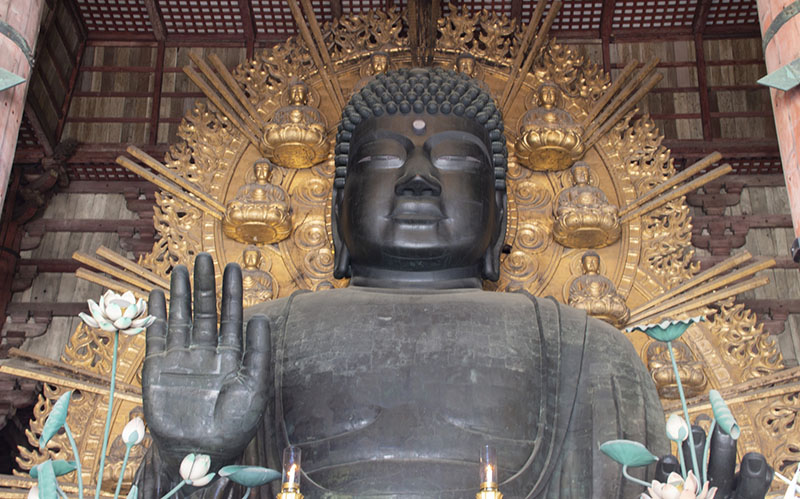
Hokkedo
The last is the Hokkedo, a national treasure.
Hokkedo, located on the east side of the temple grounds, is one of the few remaining structures from the Nara period in Todaiji Temple.
When it was built, it was called Kasaido , and was constructed as the hall of Kinjo-ji Temple, the predecessor temple of Todai-ji Temple.
There are many other architecture such as “Nigatsudo”, “Kaitando”, and “Kaisando-Do”.
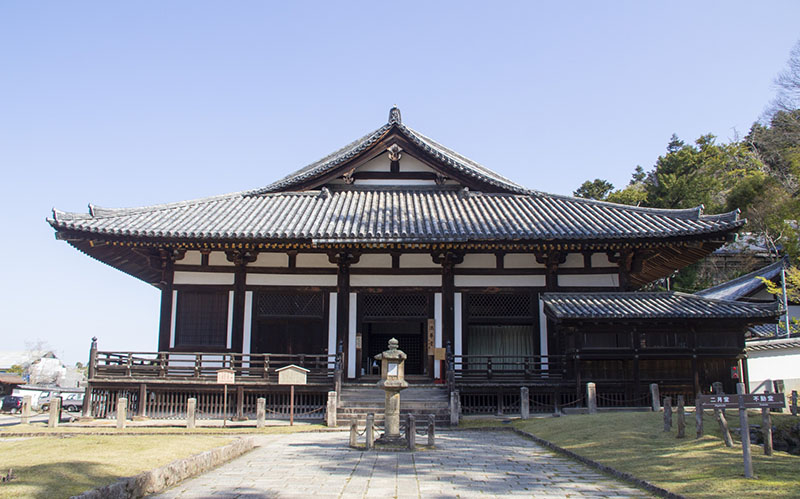
Access to Todaiji Temple
406-1 Zoshi-cho, Nara-shi, Nara 630-8587, Japan
・From “Nara Station” of JR Yamato Line and Kintetsu Nara Line.
・Take the city circular bus (inner circle) and get off at “Daibutsuden Kasuga Taisha-mae”.
・Take the city circular bus (outer route) and get off at Himuro Shrine/National Museum.
・Take the Gurutto Bus (Omiya-dori Route or Nara Park Route) and get off at the Daibutsuden-mae Parking Lot.
Parking around Todaiji Temple
Access to Official Website
Official site:todaiji.or.jp/en/
